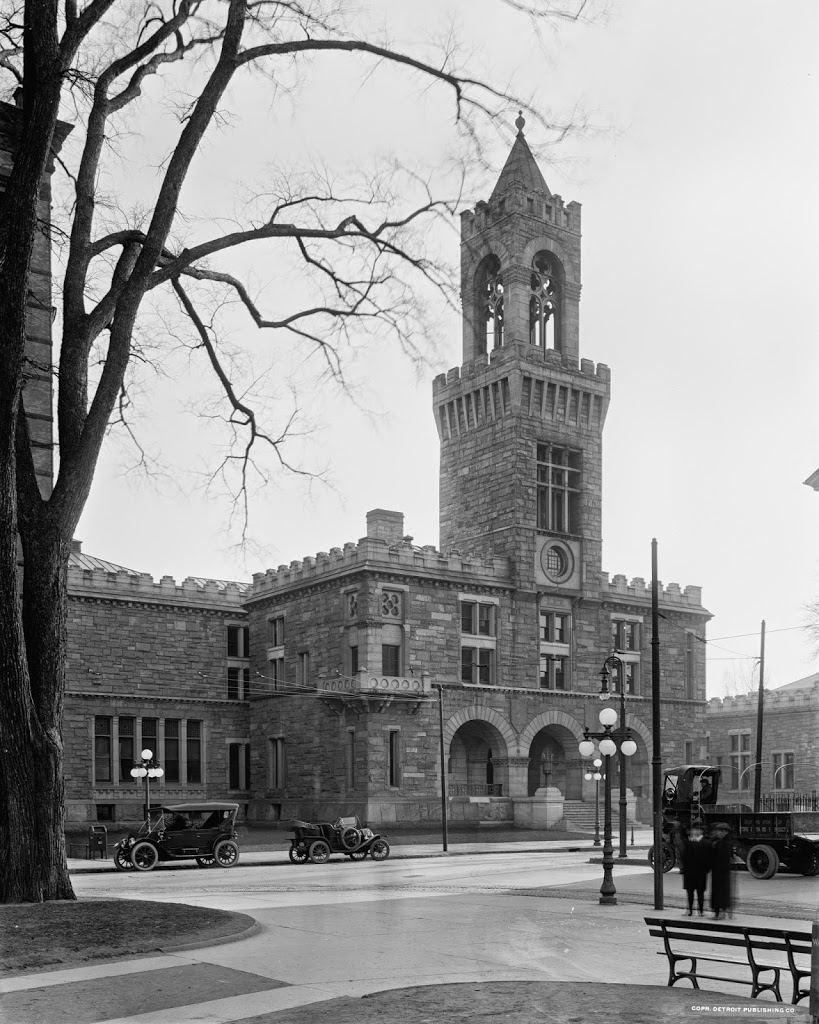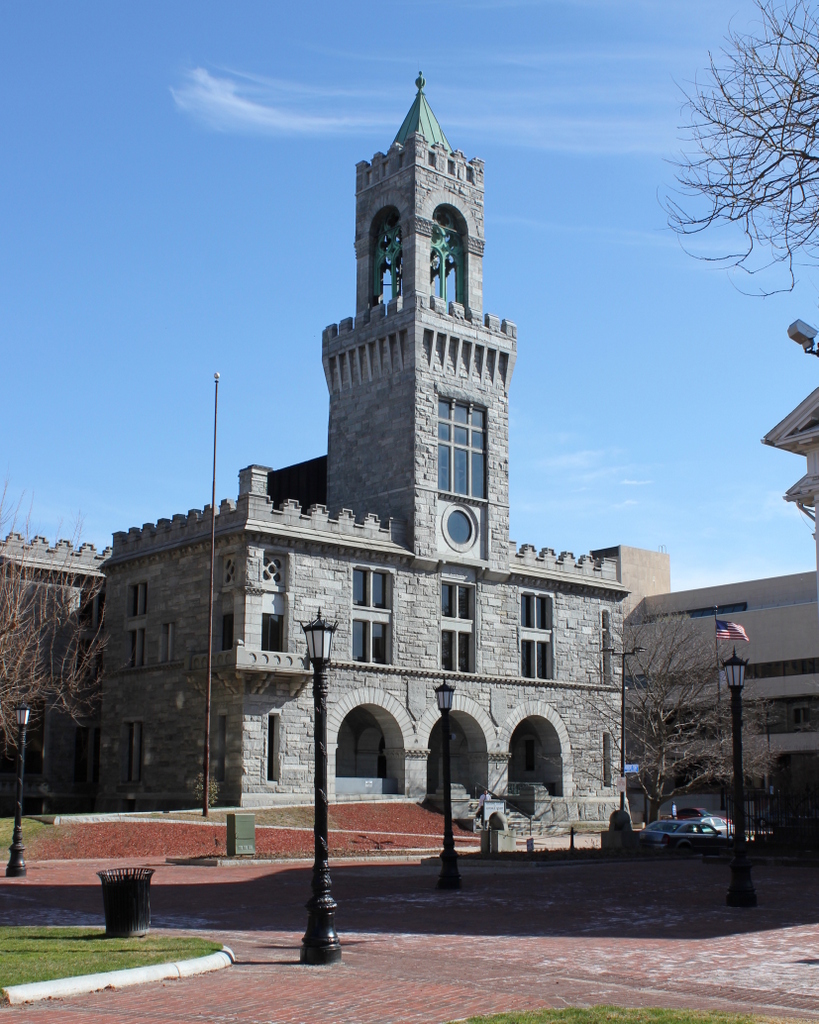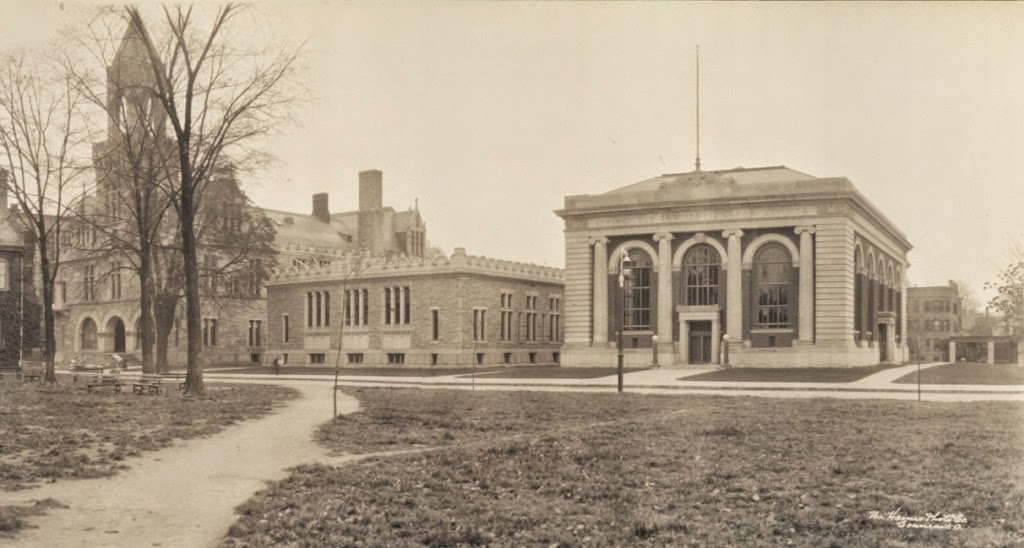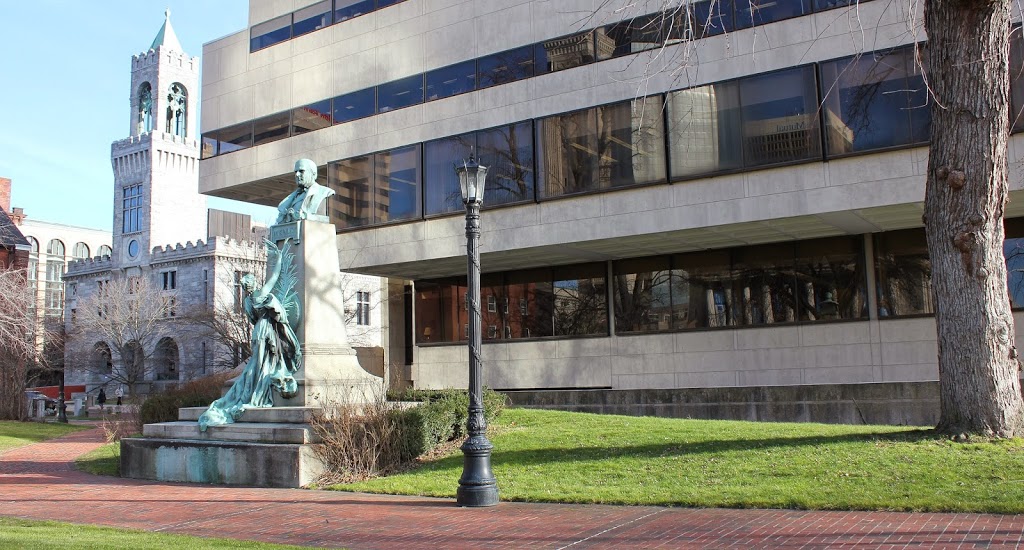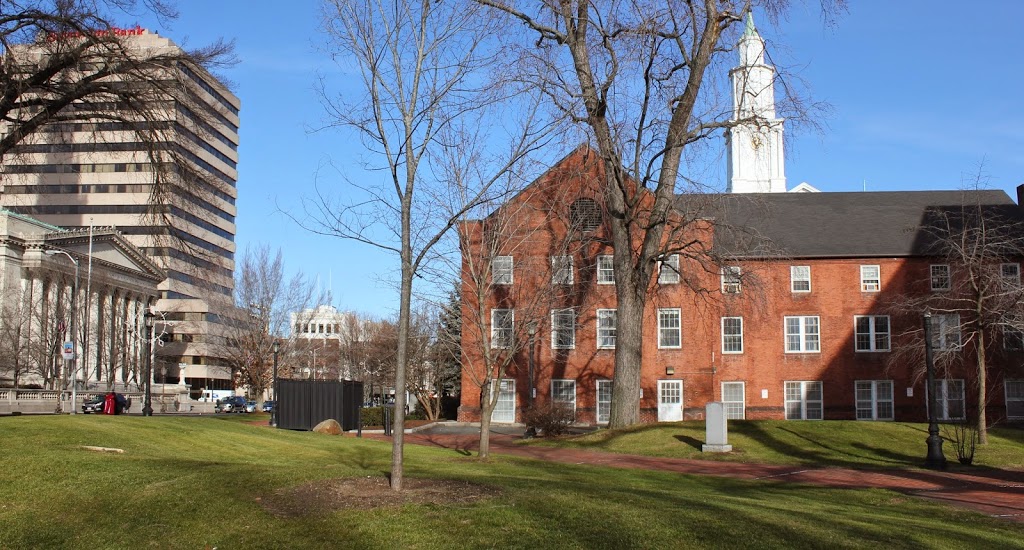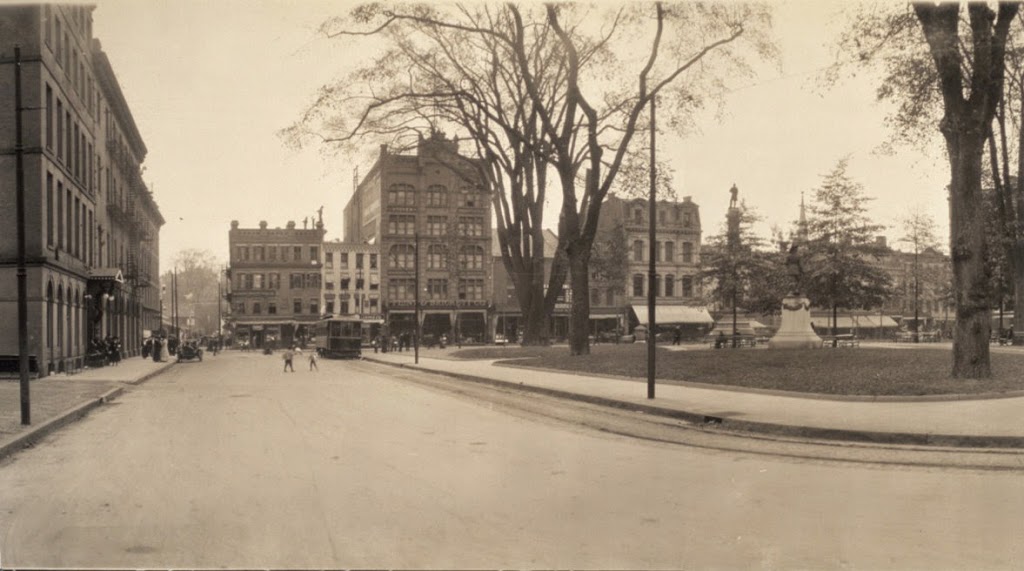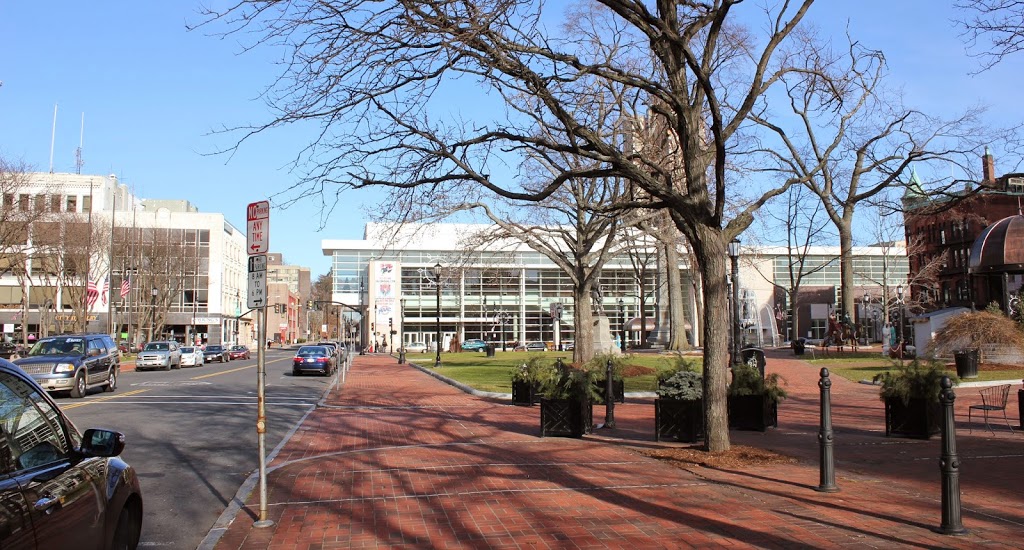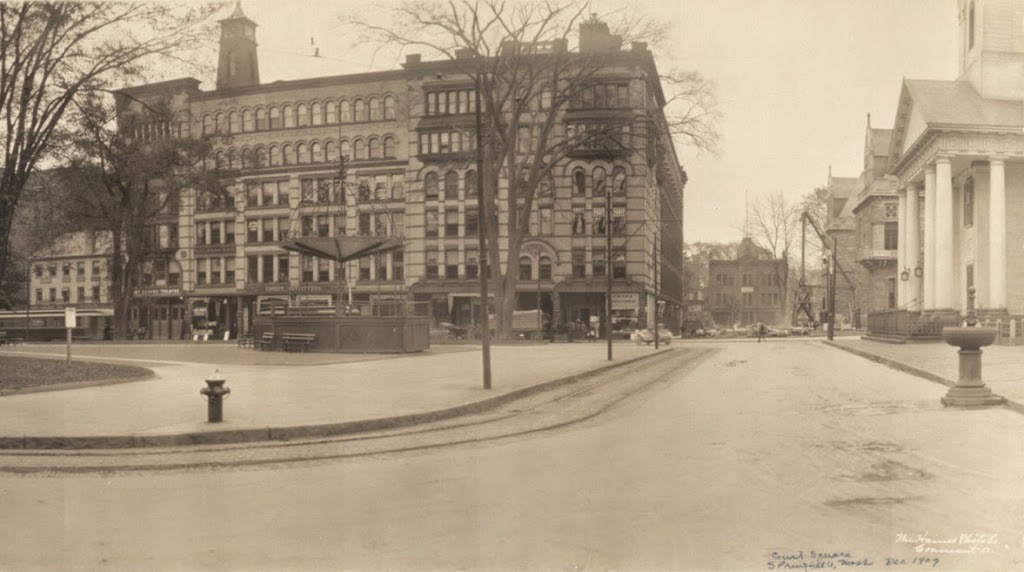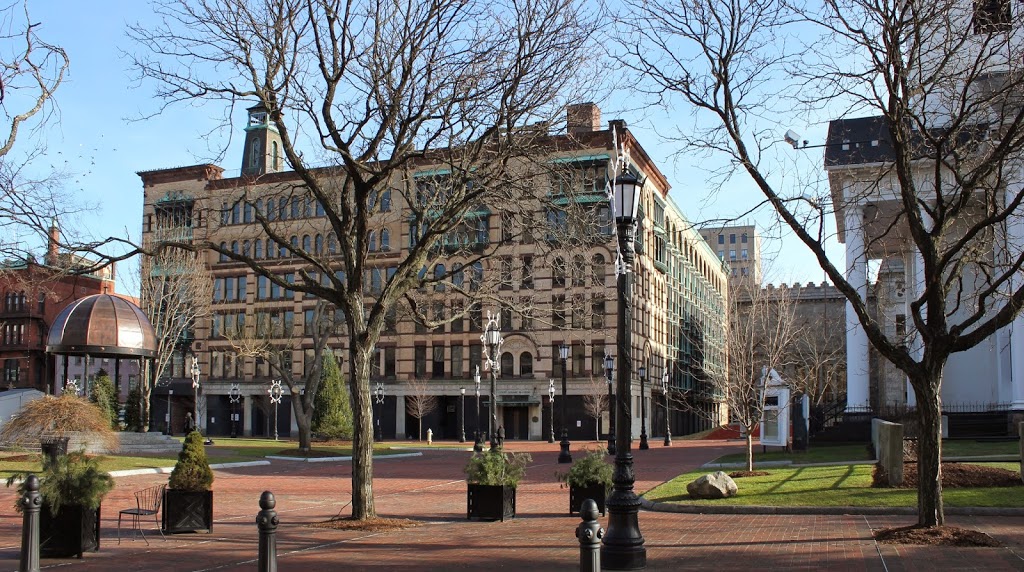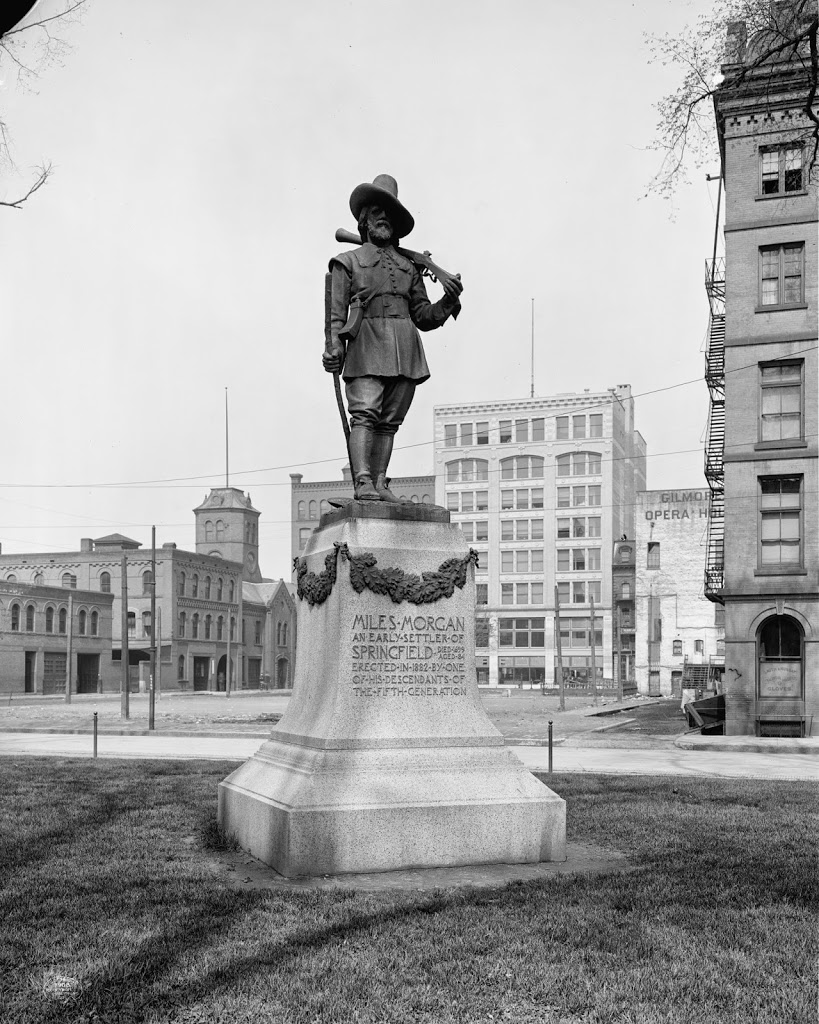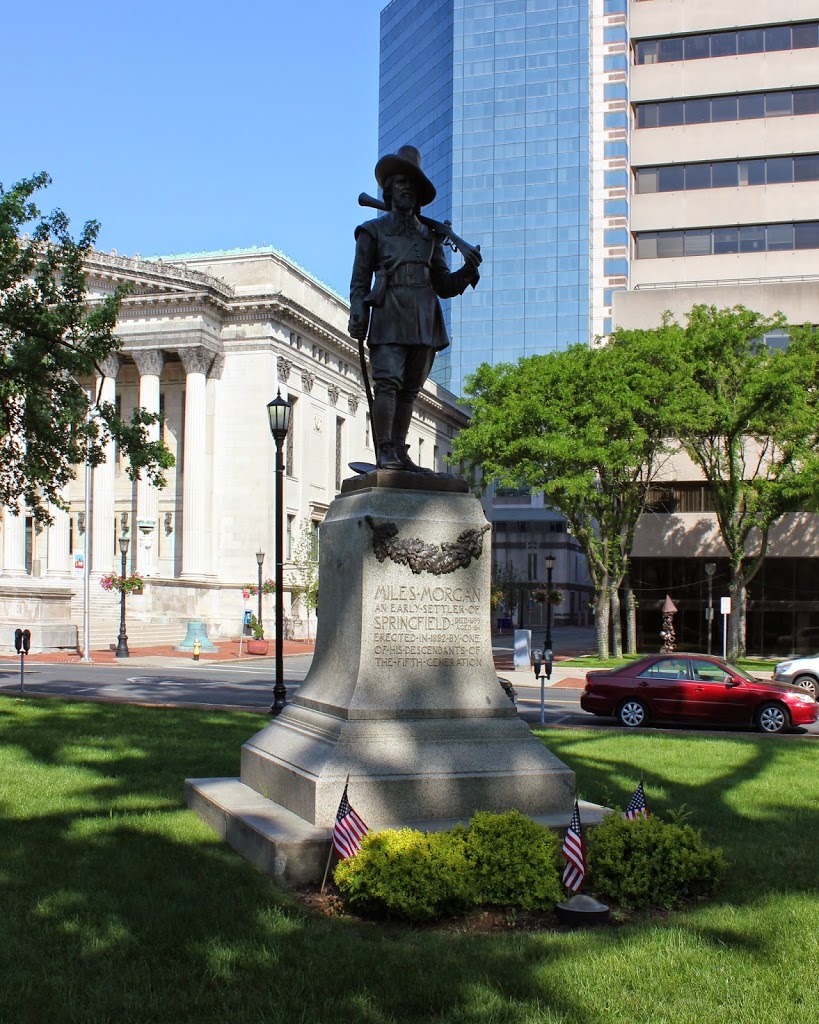The Hampden County Courthouse, as seen around 1908 from in front of Old First Church. Image courtesy of the Library of Congress, Detroit Publishing Company Collection.
The same building, sometime around 1910-1920. Image courtesy of the Library of Congress, Detroit Publishing Company Collection.
The building in 2015:
This historic courthouse building was designed by noted architect Henry Hobson Richardson and completed in 1874. However, the three photos show some striking changes to its appearance. Although the first and second photos were only taken a few years apart, they illustrate the changes that were made very shortly after the 1908 photo was taken. The building was renovated and expanded, and part of the remodeling included removing the top floor and its distinct dormers. The result is a much more toned-down version of Richardson’s original design. Today, the building’s appearance is very similar to what it looked like a century ago, although it now serves as the courthouse for the Hampden County Housing and Juvenile courts; the new county courthouse is barely visible behind and to the right of the 1874 building.


